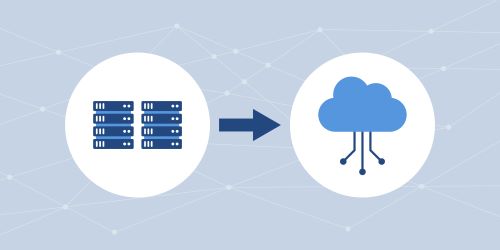The Imperative of Cloud Migration In 2025, migrating data to the cloud remains a critical strategy for organizations aiming to achieve scalability, flexibility, and cost-efficiency. As businesses increasingly rely on cloud-based solutions, ensuring a seamless and secure data migration process is more important than ever. However, the journey to the cloud is fraught with challenges, from data compatibility to security risks.
This blog explores the best practices for cloud migration in 2025, highlighting the latest tools, technologies, and strategies to ensure a successful transition.
The Basics of Cloud Data Migration
What is Cloud Data Migration?
Before jumping into cloud data migration is? Let us understand what Data migration and it means. Data migration involves selecting, preparing, extracting, transforming, and permanently transferring data from one computer storage system to another.
Cloud data migration involves transferring digital assets, applications, and services from on-premises systems or other cloud platforms to a target cloud environment. Organizations pursue cloud migration for various reasons, including:
- Scalability: Accommodating growing data volumes and user demands. • Cost Optimization: Reducing IT infrastructure and maintenance costs. • Accessibility: Enabling remote access to data and applications.
Despite its advantages, cloud migration requires meticulous planning to avoid pitfalls such as data loss, downtime, or compliance issues. Looking for the best practices in data migration? Don’t worry we have got you covered, click here to know more.
Traditional Challenges in Cloud Migration
The cloud migration process generally includes the following steps:
- Planning: Identifying migration objectives and creating a roadmap.
- Data Assessment: Evaluating data formats, dependencies, and volume.
- Migration Execution: Moving data and applications to the cloud.
Challenges that organizations often encounter include:
- Compatibility Issues: Legacy systems may not integrate seamlessly with modern cloud platforms. • Downtime Risks: Prolonged outages during migration disrupt operations. • Security Concerns: Data breaches and compliance violations are significant risks.
Real-world example: A global retailer’s rushed migration to a cloud platform led to significant downtime and revenue loss due to insufficient testing and inadequate planning. Conversely, a tech startup’s phased migration strategy minimized disruptions and ensured a smooth transition.
Emerging Technologies for Cloud Migration
GenAI Transforming Cloud Migration Generative AI (GenAI) and AI agents are revolutionizing cloud migration by automating complex tasks and enhancing efficiency. These technologies offer:
- Automated Data Mapping: AI agents align data structures between source and target systems with precision. • Predictive Analytics: GenAI forecasts potential migration issues and recommends solutions. • Real-time Monitoring: AI-driven tools detect and resolve errors during migration.
Example: During a multinational corporation’s cloud migration, AI agents streamlined data mapping and minimized human intervention, resulting in faster and more accurate execution.
Containerization and Microservices Adopting containerization and microservices architectures simplifies application migration by:
- Decoupling Applications: Breaking monolithic applications into modular components. • Enhancing Portability: Containers ensure consistent performance across environments.
Example: A fintech company utilized Kubernetes to manage containerized applications during its cloud migration, ensuring scalability and reducing downtime.
Best Practices for Cloud Data Migration
- Comprehensive Planning: Conduct a readiness assessment to identify potential risks and dependencies. • Develop a phased migration strategy to minimize disruption.
- Data Prioritization: Classify data based on sensitivity, frequency of access, and importance. • Migrate critical data first while archiving redundant or outdated information.
- Leverage Automation: Use AI-powered tools for data mapping, validation, and error detection. • Automate repetitive tasks to reduce manual effort and increase accuracy.
- Test and Validate: Conduct rigorous pre-migration testing to identify compatibility and performance issues. • Validate data integrity and application functionality post-migration.
- Ensure Security and Compliance: Encrypt data during transit and at rest. • Adhere to industry-specific regulations, such as GDPR or HIPAA.
Real-world example: A healthcare provider’s adherence to these best practices ensured a seamless transition to a cloud platform while maintaining compliance with data protection laws.
Is Cloud Migration the future?
Yes, Certainly cloud migration is the future. The Future of Cloud Migration Migrating data to the cloud in 2025 is not merely a technical task but a strategic imperative for organizations aiming to remain competitive in a digital-first world. By leveraging advanced technologies like GenAI and containerization, adhering to best practices, and prioritizing security, businesses can ensure a successful cloud migration journey.
Data migration is a complex but essential process for organizations looking to evolve their data management strategies. By following a structured approach, focusing on key components, and implementing best practices, businesses can achieve seamless data migrations that support their growth and innovation goals.
Organizations embracing these approaches will be better positioned to harness the full potential of cloud computing, driving innovation and growth in an increasingly data-driven economy.
For more insights and detailed consultation, visit DataMigration.AI to learn how we can support your data migration needs.




